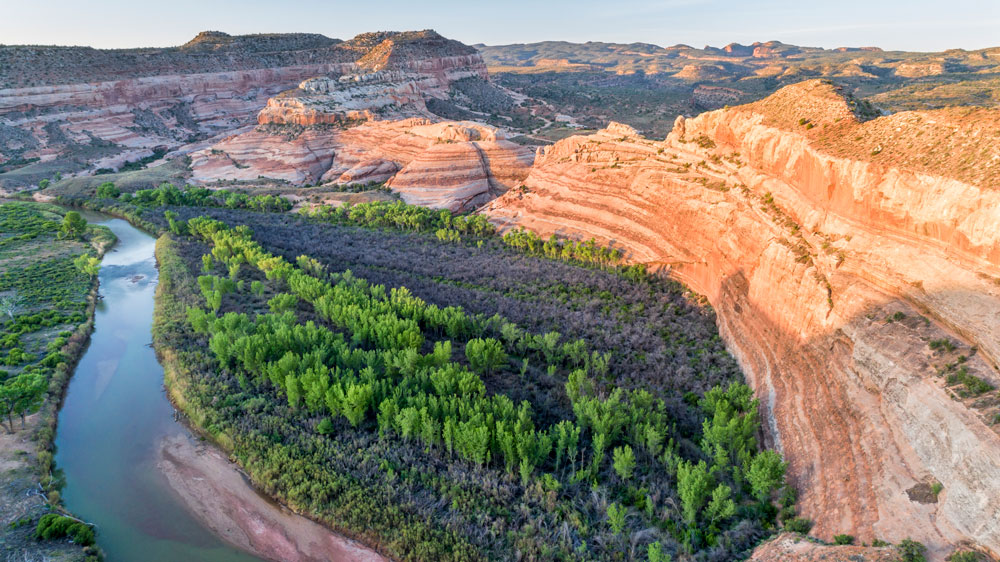
With a $158,000 grant awarded by Forever Our Rivers Foundation, conservation crews have a head start on their annual quest to improve the health of the Colorado River basin.
Crew members will monitor, treat and prevent non-native species like tamarisk—one of the most invasive plants in the Colorado River basin—and nurture native species in Colorado, Utah and Arizona.
When harmful invasives are removed and replaced with native plants, the resulting increased biodiversity allows ecosystems to thrive and become more resilient to a changing climate.
“Combating invasive species is essential, and not only for protecting our unsurpassed hiking, fishing and boating experiences,” said Ann Johnston, executive director of Forever Our Rivers. “Rivers and streams are far more important than the water running through them.”
Conservation Legacy of Durango, Colorado, will lead the crews in partnership with watershed groups in the Dolores, Escalante, Verde and Gila Rivers of Colorado, Utah, New Mexico and Arizona. Their Southwest Conservation Crews will work directly with local nonprofits in the individual watersheds.
“The funding not only progresses the vital restoration efforts of the watershed partnerships, it educates youth by engaging them directly with the work and helps build the next generation of land stewards,” said Nate Peters, Conservation Legacy’s watershed programs manager.
Healthy rivers provide clean water, store carbon, and serve as a buttress against the impacts of climate change. Introduced in the 1950s, Russian olive and tamarisk quickly choked waterways with dense growth that outcompeted native vegetation such as cottonwoods and willows, leading to severe channel narrowing. Preliminary research shows a significant decrease in channel width following the Russian Olive and tamarisk invasions, and a beneficial increase in width after treatment. In other words, treatment not only allows for the recovery of native vegetation but also restores more natural river geomorphology and meander. It also lowers fire danger and improves river access.
Conservation Legacy and the Southwest Conservation Crews will continue this important work throughout the summer and fall of 2023.
